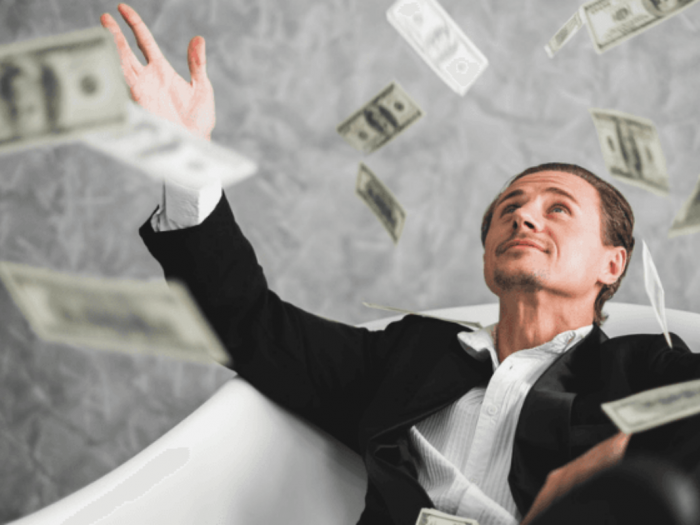Contents

During this period the market gold price fell from a high of $850/oz ($30/g) to a low of $253/oz ($9/g). The stock market was also described as being in a secular bear market from 1929 to 1949. Many traders opt to trade in the same direction as a trend, while contrarians seek to identify reversals or trade against the trend.

- For example, young, single women might spend more money on higher-priced shoes, while mothers might spend less, opting for functionality over fashion.
- In other words, a sideways trend, or flat, on Forex is manifested in the price chart as highs and lows located sequentially at approximately the same level.
- Learning how to identify the trend should be the first order of business for any student of technical analysis.
- Trends apply to all assets the cost of which is fluctuating, or when there’s a change in the trading volume.
- While Fibonacci retracements help traders pick out optimal trade entry points in trending markets, Fibonacci extension levels attempt to show how far the price can go.
- While the trend is up, traders focus on buying, attempting to profit from a continued price rise.
Traders can also exit positions using raw price action signals, for example, reversal candlestick patterns, such as double bottom, in bullish trending markets. Exiting trade positions can be done manually or using stop loss and take profit orders. Take profit orders book a predetermined profit amount out of the market and are best applied using tools, such as channels and Fibonacci extensions as discussed above. A downtrend describes the movement of a stock to a lower price than previously. It will exist as long as there are lower highs and lower lows on the stock chart. A trader can potentially save money if he decides to sell a falling stock.
A Must-ReadeBook for Traders
This often leads the economic cycle, for example in a full recession, or earlier. Uptrend is a term used to describe an overall upward trajectory in price. Many traders opt to trade during uptrends with specific trending strategies.
Therefore, when the https://business-oppurtunities.com/ of the market is upward, you should be more cautious when taking a position that will rely on the trend reversing directions. Marketing is about using analysis and knowledge for a company to optimize the results of its digital marketing. Sales departments won’t have to spend time chasing low-quality leads, as they’ll spend more time connecting with high-quality information and converting them into customers. Coordinating sales and marketing teams are proven to help you generate higher revenue, retain more customers, and achieve higher goals. Creating content for the different periods of the purchasing funnel will push potential customers to the conversion stage.
Definitions & Translations
It is an oscillator that shows overbought and oversold conditions in the market, but it can be used to qualify the strength of trends as well. The RSI oscillates from 0 to 100, with the readings of 30 and 70 showing oversold and overbought conditions, respectively. When prices are above 50, it implies that the underlying market is in a strong uptrend; whereas prices below 50 imply that the underlying market is in a strong downtrend. There are other ‘sophisticated’ ways traders use to determine and trade trends in the market. Below are some of the major technical analysis tools used in order to qualify trends. To confirm an uptrend or a downtrend, technical analysts recommend finding at least three examples, or data points, to support what appears to be happening.

The market analysis boils down to tracking the dynamics of price highs and lows. The medium market takes its position as a secondary market trend. The medium market trend could last from a few weeks to several months.
career transitions averages show a security’s average value over a set period of time, assigning different weights to prices in the data set. Uptrend lines have positive slopes, which means a line connecting the points rises from the left to the right. While security is trading along with a particular uptrend, the support level is thought to indicate the lowest prices the security is expected to reach during the trend. If the support level is broken, it could signal that the current trend will soon reverse. Point and figure charts, bar charts, and candlestick charts are some of the tools analysts use. It’s important to focus on trends in this process so you can understand what appeals to your target audience.
Market trend analysis looks at how your industry started in the market, how it has grown, and where it is expected to go. For example, how cell phones first come about, how their popularity changed, and how manufacturers and retailers expect the market to change. Both technical and fundamental analysis can be used to identify market trends.
Therefore, investors will have to develop the ability to know when to buy or sell with the goal of maximizing profit. It would also may benefit investors to time their actions appropriately depending on whether the bull market is beginning or ending. A clear indicator of a bull market is an extended upward trend in 80% or more of stock prices. An increase in market indices of +15% or more may also indicate the presence of a bull market. Primary trends are among the most frequently observed market trends.
Technical Analysis – Trend Following Indicators
For graphical and technical analysis of long-term trends, traders use weekly and monthly timeframes. Long-term trends are of interest to large market participants and investors who prefer holding assets for several years . If the price has been moving in one direction for several weeks, the trader will notice that a resistance or support line is forming on a 4-hour or daily chart. But if the trend has changed recently and a new movement is just starting to form, the borders of the trend line are hard to distinguish yet. In this case, various tools are used — they are called ‘trend indicators’. They reflect both price change direction and the trend’s strength.

Investors can also use fundamental analysis to identify a market trend by looking at changes in business or economic metrics, such as revenue and earnings growth. Moving averages are also used to determine support and resistance levels of an asset’s price, and the overall price trend. These short-term trends are typically shaped by current news and changes in trading volumes. When an asset’s price moves into a series of lower highs and lower lows, it’s said to be in a downtrend or bear market. William O’Neil reported that, since the 1950s, a market top is characterized by three to five distribution days in a major stock market index occurring within a relatively short period of time.
The true answer to that is trends last for as long as they last. It is our job to identify the trends, to capture part of the trend for a profit, and to get out before the trend comes to an end and reverses. There are both uptrends and downtrends, and even sideways trends. There are trends that last for 5 years or longer, trends that last for a year or less, and even trends that occur over a single trading session. On the other hand, stop-losses are orders that close your position when prices move against you, so as to protect you from further losses. Stop-losses are an important risk management tool because they prevent catastrophic losses.
This change in the communication market is an excellent example of a market trend. When a company records positive earnings growth for several consecutive quarters, it represents a positive market trend example. On the other hand, when a company’s earnings fall consistently over a certain period, it shows a negative trend.
Are we missing a good definition for Market trend? Don’t keep it to yourself…
In other words, a perceived tendency to move in a particular direction. If the price closes above the weekly average, the market will continue to move up for quite a long time afterward, in the opposite case — the market will experience a downtrend. Despite its reliability, the Moving Average indicator can be lagging, which makes it less suitable for short-term trading.
You can then follow this with your competitor research in your business plan, to give a full picture of your industry and where you fit in. Read relevant publications in your sector to find out what is making headlines. Magazines or online blogs that share up-to-date opinions and thought leadership will help you stay on the pulse of what is currently important to the industry. We created DemandJump to help marketers get insights and drive outcomes faster and more efficiently. DemandJump doesn’t just track search trends and consumer behavior in real-time, but also draws in insights from competitors to help you see how they are reacting to trends. The value of shares and ETFs bought through a share dealing account can fall as well as rise, which could mean getting back less than you originally put in.
For instance, if an uptrend price breaks above a defined resistance level, technicians will be inspired to join in on the move or add to their positions. This will then fuel demand, which will propel the uptrend further, even without any notable change in the underlying fundamentals. Fear, greed and confidence are the major emotions that influence trader activity, and collectively, they may determine the prevailing market sentiment. If market participants are collectively fearful, there will be negative market sentiment, and consequently, bearish pressure in the market. On the other hand, if they are collectively confident , there will be a positive market sentiment, and consequently, an uptrend. A tide that has been rising for the last one hour may be made up of waves and ripples that have been falling in the last few minutes.
You can research global market trends, or search trends by geographic location. We’ll show you all the trends related to your search so you can view trend data and track trends in your dashboard. You can also start an Exploding Topics Pro Trial to see all of the latest trends on our platform and access up to 10 of the most recent market trend reports. By definition, a trend is the general direction in which market values or the price of an asset move.
Market trend analysis can obtain valuable insights into the overall scenario of a market. For example, a SaaS company can discover the products, services and startups within a particular niche of their industry. All of these areas are interconnected, as expected future conditions shape current decisions, which, in turn, create current trends. The government influences trends mainly through monetary and fiscal policies. These policies affect international transactions, which in turn affect business and economic stability. Assumptions and expectations drive prices based on what the intrinsic value might be in the future.
So instead of searching “marketing trends,” you could look at something as specific as “Accessible Martech” or “Niche Streaming Services” and see all of the trends that make up the meta trend. We also provide a trend analysis report for each topic so you can get a little more background on meta trends. Reversal chart patterns form in trending markets as well, but they signal that the prevailing trend is losing momentum and a reversal is about to happen. Some popular reversal chart patterns include head and shoulders as well as double bottoms. In this kind of trend analysis, there is typically a comparison between the current market with others, such as year-by-year or period-by-period analysis. Variations can involve changes in demand levels in the market, allowing businesses to take appropriate action, as periods of high demand and low demand require different strategies.
